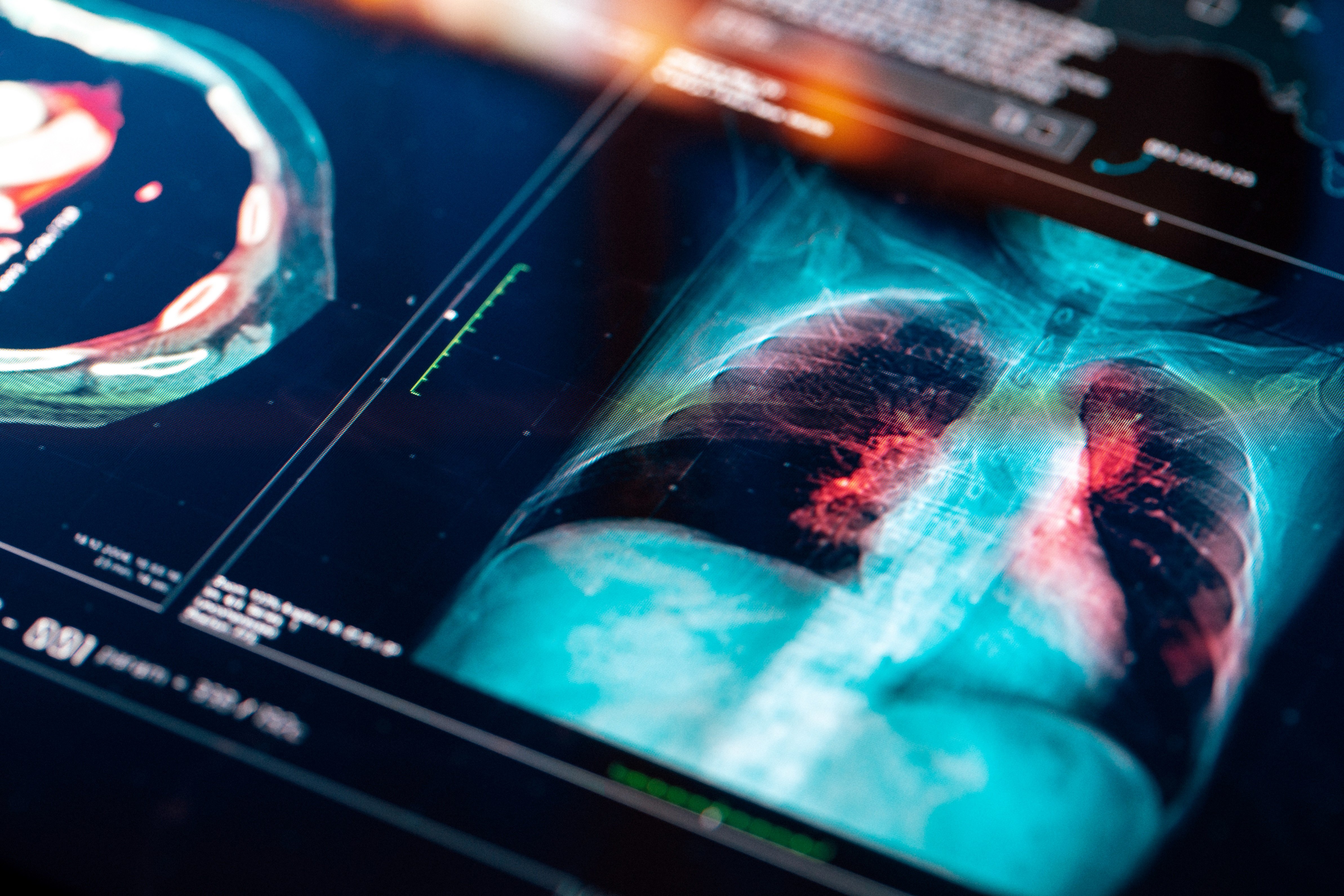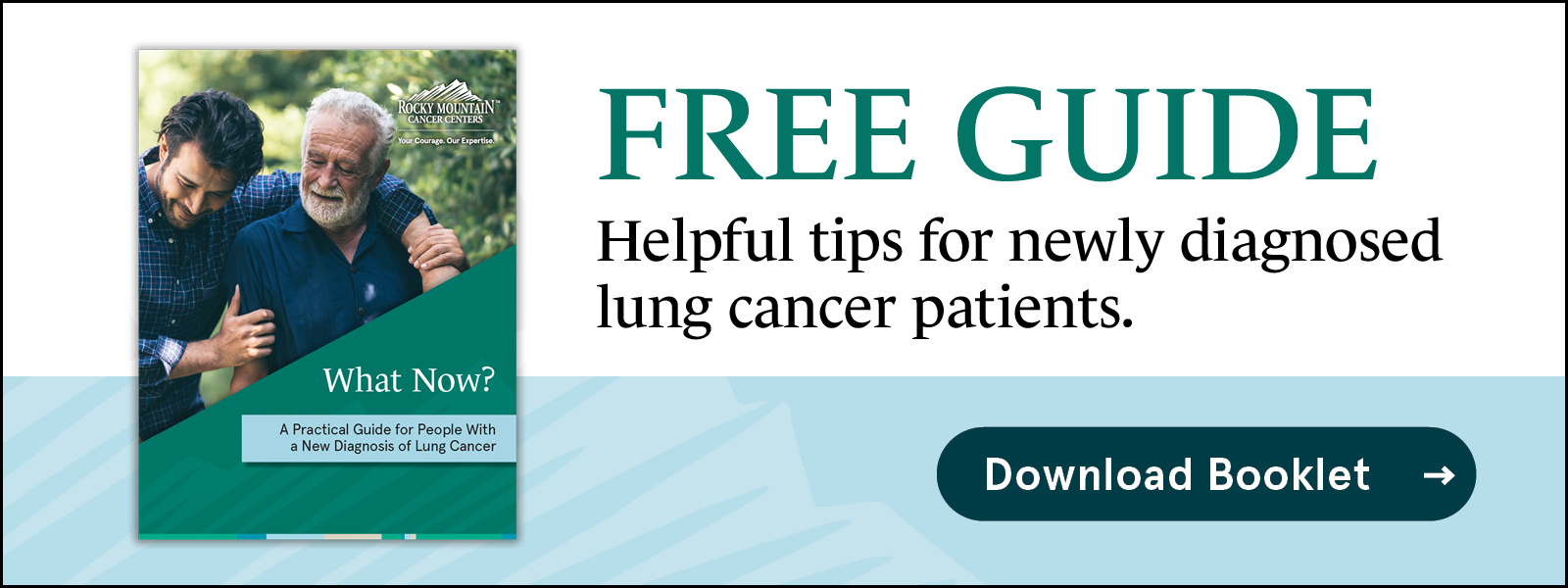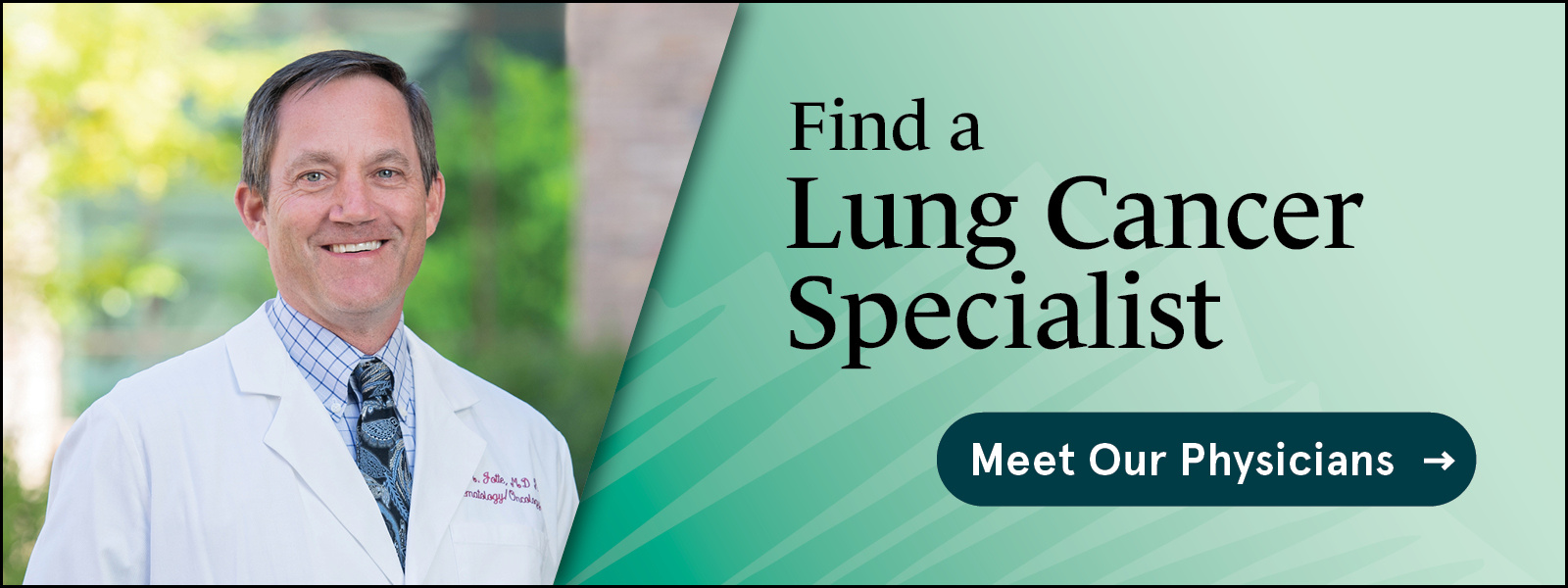Nonsmokers Can Get Lung Cancer Too
5 min read

Author: Robert M. Jotte, MD
If you don’t smoke but have been diagnosed with lung cancer, one question may loom large: How did this happen? Unfortunately, nonsmokers can develop lung cancer too, and several factors increase your risk.
The Leading Cause of Lung Cancer Doesn't Apply to Nonsmokers
Above everything else, smoking tobacco is the main cause of lung cancer. In fact, smoking accounts for about 80% of lung cancer deaths, according to the American Cancer Society.
Read more about the causes and risk factors of lung cancer.
But what about the 10% to 20% of annual lung cancer cases in the U.S. among people who have never smoked or smoked fewer than 100 cigarettes? Studies show that women who never smoked are more likely to develop lung cancer than men who never smoked.
For nonsmokers, genetics and exposure to cancer-causing chemicals can raise the risk of lung cancer.
For smokers, “Quitting is the most effective way to protect against lung cancer,” said Dr. Jotte, medical oncologist and hematologist at Rocky Mountain Cancer Centers (RMCC). “However, becoming a nonsmoker doesn’t lower your risk level to that of someone who never smoked. Whether you quit last week or years ago, your risk remains higher. Still, going 10 years without smoking cuts lung cancer risk in half compared to someone who smokes. That’s a major win for your health.”
If you have a history of smoking, even if you don't smoke now, find out if you're eligible for lung cancer screening.
Non-Smokers and Lung Cancer
Lung Cancer Risk Factors for Nonsmokers
Most changes in the DNA of healthy lung cells that lead to lung cancer occur due to exposure to harmful substances on a regular basis. This can be smoke or other substances. Less commonly, lung cancer-related gene changes run in families.
One risk factor that can affect both smokers and nonsmokers is long-term exposure to radon gas.
“Radon occurs in soil, and it’s not a problem outdoors because it’s present at low levels,” Dr. Jotte said. “However, if it rises from soil and enters your home through cracks in the foundation or other gaps, it can become more concentrated in the indoor air. That can be dangerous.”
Radon, which is present at high levels throughout the state of Colorado, causes the most cases of lung cancer among nonsmokers and the second-most cases overall, according to the Environmental Protection Agency.
What else can increase nonsmokers’ lung cancer risk?
- Air pollution, especially near high-traffic roads
- Exposure to asbestos, a group of minerals found as tiny, airborne fibers in some older buildings
- Exposure on the job to cancer-causing agents, such as diesel exhaust
- Secondhand smoke from friends, family, or others
Reduce Your Risk of Developing Lung Cancer
You can test your home for radon using kits available at hardware stores. If levels are too high, take the immediate step of opening windows and using fans to improve air circulation. Then create a plan to seal up areas where the radon may be coming into the house.
A certified professional can install a radon mitigation system. Some of these systems use air pressure to direct radon gas from a sealed space under your house to the outside. Other systems remove radon from your water supply.
If you are considering a new home, be sure to have the properties you are considering tested for radon during the home inspection process and ask about radon resistant construction in newer homes.
More risk reduction steps you can take to protect against lung cancer include:
- Check the air quality in your area and avoid outdoor activities when pollution is high.
- Follow a healthy diet that includes plenty of fruits and vegetables.
- Move away from people who smoke or ask them to not smoke around you.
- Wear proper safety equipment if you work around cancer-causing agents – and advocate with your employer for health and safety protections for workers.
Should Nonsmokers Undergo Lung Cancer Screening?
Experts recommend an annual, low-dose lung CT screening for certain current or former smokers who are 50 to 80 years old. This test can identify small growths called lung nodules that may be cancerous. Detecting lung cancer in its early stages like this can lead to easier treatment and better results. However, at this time, insurance primarily covers screening for those who have a history of smoking.
Learn more about who is eligible for lung cancer screening.
 It’s also important to inform your provider if you experience potential lung cancer symptoms, such as chest pain, a persistent cough that may contain blood, shortness of breath, wheezing, fatigue, or loss of appetite. Detecting early-stage lung cancer in nonsmokers can be difficult, and symptoms may indicate that the disease is progressing.
It’s also important to inform your provider if you experience potential lung cancer symptoms, such as chest pain, a persistent cough that may contain blood, shortness of breath, wheezing, fatigue, or loss of appetite. Detecting early-stage lung cancer in nonsmokers can be difficult, and symptoms may indicate that the disease is progressing.
Shining a Light on Adenocarcinoma of the Lungs
Among both nonsmokers and people who smoke, non-small cell lung cancer is the most common type. Typically, this disease spreads slower than the other major type of lung cancer: small cell lung cancer. For nonsmokers, the most common form of non-small cell lung cancer is adenocarcinoma.
“Different types of non-small cell lung cancer develop in different parts of the lung,” Dr. Jotte said. “Adenocarcinoma arises in the outer part of the organ in cells that make mucus. Importantly, we’re more likely to detect adenocarcinoma before it spreads to other locations. That’s helpful for treatment.”
Every treatment plan is different. Your multidisciplinary lung cancer treatment team will determine the most appropriate treatment based on a variety of factors, including the type and stage of the cancer and your overall health. Treatment options include:
- Surgery to remove the tumor, which may be appropriate for early-stage lung cancer
- Radiation therapy – sometimes in conjunction with chemotherapy – to kill cancer or shrink a tumor before surgery
- Chemotherapy to shrink a tumor before surgery or destroy any remaining cancer cells after surgery
- Immunotherapy to spur your immune system to kill cancer cells
“One of the most innovative forms of treatment for non-small cell lung cancer is targeted therapy,” Dr. Jotte said. “These medications are designed to act against specific genetic mutations. For some patients, targeted therapy is another option if chemotherapy isn’t effective. EGFR and ALK mutations are common in nonsmokers with lung cancer, and we have promising therapies that target these changes.”
Lung cancer treatment continues to advance, thanks to clinical trials. Researchers are learning more about how lung cancer develops in nonsmokers. Their findings may improve treatment for these patients.
At RMCC, our specialists create personalized lung cancer treatment plans featuring the most up-to-date therapies and protocols.

